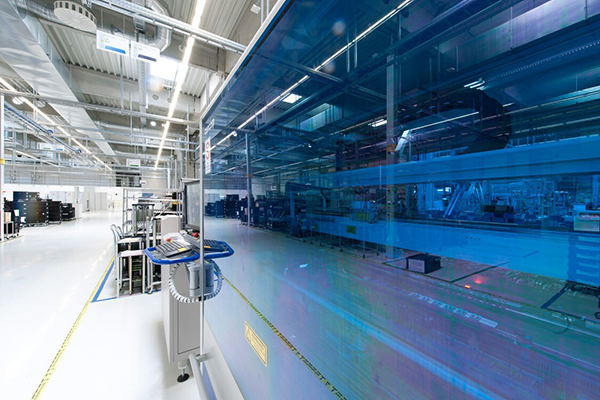Failure to address safety as a priority can put people, the environment, the company’s reputation, and careers in harms’ way.

By: John D’Silva
In a recent survey, EHS Today asked, “Aside from COVID-19, what is the biggest challenge facing the industry today?” The answers included statements like:
Safety should always be a top concern in manufacturing. Failure to address safety as a priority can put people in harms’ way, harm the environment, the company’s reputation, and end careers. In addition, bypassing safety certainly lead to production failures, downtime, and unnecessary costs. Therefore, a robust approach to safety, including conducting a risk assessment, implementing safety, and thorough documentation & planning, are crucial to running the most efficient safety process within a plant.
Now more than ever, safety is a big concern. For executives, safety cannot be de-prioritized – as failures to address safety can put people in harms’ way, harm the environment and community, and end careers. However, the ancillary benefits of safety to plant operations and the bottom line are often not emphasized. Quantifying the benefits of safety in terms of both injuries reduced, downtime prevented and increasing production.
Traditionally, safety has been seen as a requirement that works against efficiency and increases costs. Whether in electrical, mechanical or machine safety, plant managers can actually quantify all EHS processes on a longer-term and big-picture view related to productivity and total cost to the business.
For example, when a plant needs to increase the speed of a line but doing so causes an operator injury, the plant may experience downtime, medical costs, increases in insurance premiums, legal fees, and even possible inspections and fines from regulators. Another example is when plants employ hard guards to prevent injuries when operating cutting blades. Despite the physical barriers, operators often must enter the dangerous area during a maintenance cycle, necessitating processes or systems designed to avoid injury. The critical goal of safety design is to reduce that potential for injury. A safe plant also avoids the risk of costs related to common minor injuries like repetitive motion strain. Implementing automation at use-case specific points can allow the dynamic changes in production speed needed to adapt to a changing business environment while simultaneously reducing the risk of injuries.
Another example, my team recently worked with Schott & Meissner, machine designers in the nonwovens space, to create safe, efficient, automation-enabled PPE lines that are compact enough to fit into a hospital basement. This means large hospitals can have on-demand PPE supplies, unaffected by supply-line issues. Safety and efficiency is key for an application like this, outside of the traditional manufacturing plant floor and with limited numbers of operators available.

Automation with safety integrated, reduces and prevents the injury or death of plant operators. For the example above about cutting blades, automation technology can be used to employ safety sensors to prevent any machine operation when operators are present. Another example – a press used by car manufacturers can employ automation and safety built into the same PLC that can analyze safety signals in multiple places, multiple times per second, and shut down the machine, if there is any risk of injury. These essential safety technologies mitigate the risk of injury AND downtime. Historically physical guards were the only way to prevent injury but modern sensor and PLC technology makes integrating safety with automation easy to access and implement.
Plant decision makers can improve safety and efficiency by doing a risk assessment. Here are a few tips:
Safety-focused design that leverages automation helps plants scale production to demand without installing whole new lines or risking operator injury. Automation for essential functions allows dynamic changes in production volume, maximizing the flexibility for plant decision-makers to respond to changes in demand. When designing a new line, plant decision-makers and engineers can design with safety and automation hardware in mind that mitigates injury risks while increasing efficiency. Implementing PLC hardware with integrated safety technology saves plants time and money over the long term.
Safety is about saving lives and automation is a growing part of safe plant environments. In the past, safeguards may have been removed from machines after delivery because they were ‘in the way’ and slowed down production. Modern automation and safety technology can streamline the plant, reduce costs, and make the whole plant safer for operators – making safety technology a critical part of productivity instead of being viewed as a hindrance to it.

As the, Automation Marketing, Promotions & Safety Technology Manager – Factory Automation at Siemens, John D’Silva is a professional engineer with over 28 years of industrial automation experience around the globe, including 20 years of functional safety in North America. He has been writing articles on machine safety for more than 15 years and is frequently a panelist on numerous safety discussion boards. OSHA & TUV certified, John also works in close coordination with UL, NFPA, RIA, TUV and other machine safety standards organizations to assist customers with their safety compliance and application requirements.
In this episode, I sat down with Beejan Giga, Director | Partner and Caleb Emerson, Senior Results Manager at Carpedia International. We discussed the insights behind their recent Industry Today article, “Thinking Three Moves Ahead” and together we explored how manufacturers can plan more strategically, align with their suppliers, and build the operational discipline needed to support intentional, sustainable growth. It was a conversation packed with practical perspectives on navigating a fast-changing industry landscape.